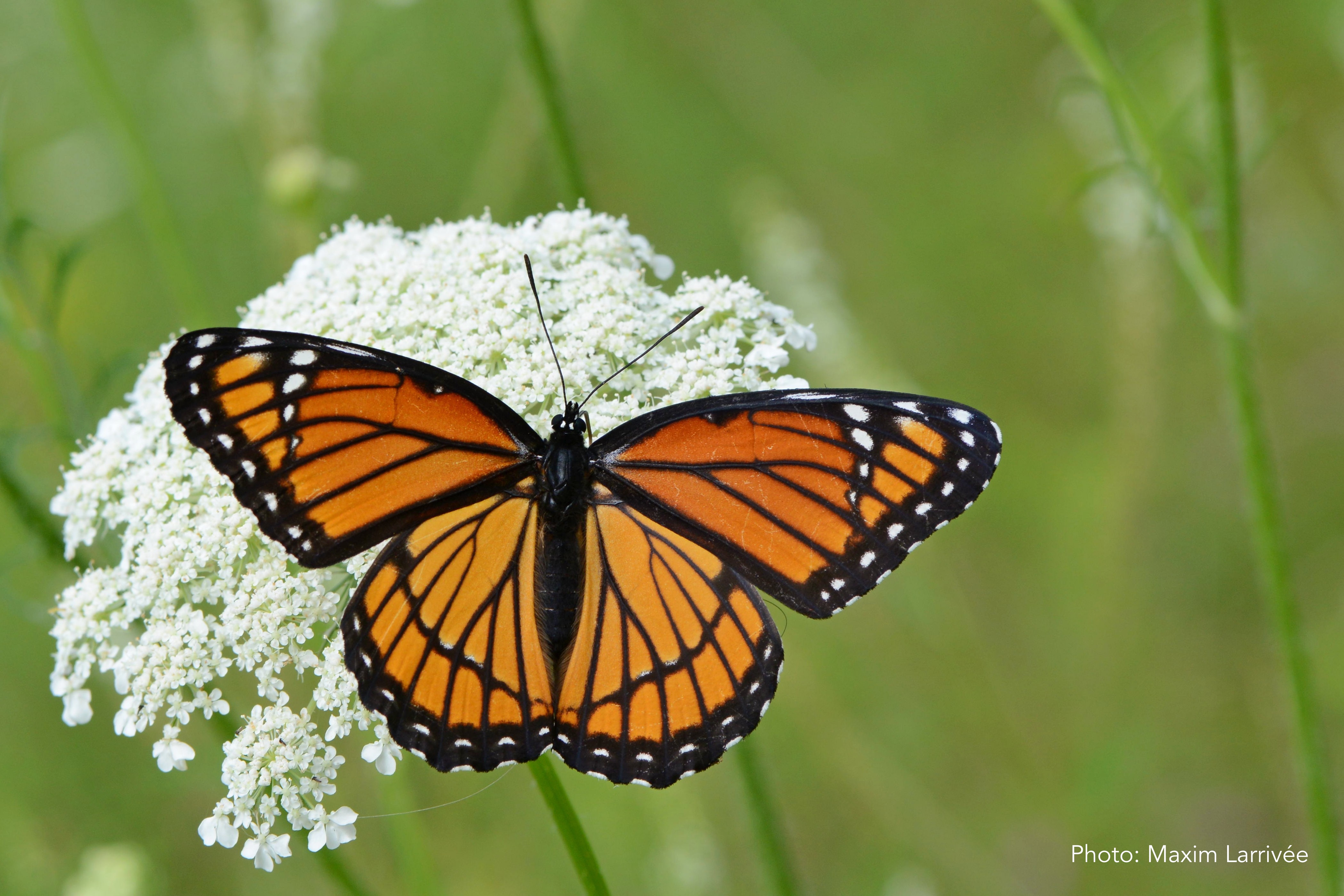Coordinator of the Mission monarch project

… but not all orange butterflies are monarchs !
At the beginning of summer, we might be impatient to see a familiar black and orange butterfly, but we must stay vigilent. Butterfly species that are not monarchs show similar patterns and colors. Even the best observers can be fooled ! Here is how to recognize the different species.
Colors that say a lot
In the wild, most preys favor dull colors that match their habitat. But with its bright orange wings, the monarch is not really good at camouflage ! Even the caterpillar is hard to miss, with its yellow, black and white stripes.
With these colors, the monarch sends a very specific message : that of toxicity. The toxins contained in milkweed – the plant that monarch caterpillars eat – are accumulated in the insect’s body, giving it a very bad taste. Therefore, the bright color serves as a warning to predators : « don’t eat me, I taste awful ! »
Lookalikes
The monarch is usually recognizable by its orange wings and black stripes. We can’t relay on these sole features to identify a monarch, though, because many other species show similar ones.
In Canada, the list of orange butterflies is quite long. Fritillaries, coppers, admirals and painted ladies can easily be confused with monarchs, if they are seen quickly. The swallotails, on the other hand, also have black stripes ont their wings, although they show a bright yellow color.
Nevertheless, the immitation champion is, without a doubt, the viceroy. This butterfly is found from central to eastern Canada, and looks almost exactly the same as the monarch. Has it evolved to look like the ladder to take advantage of it’s toxicity warning ? Or has it developed the same tricks over time, being toxic itself ?
Whatever the explanation behind the resemblance is, it’s actually pretty easy to make the difference, when you know what to look for. First, size matters ! Whereas the monarch is one of the biggest buterflies of Canada, with its 10cm wingspan, the viceroy is no larger than 7cm. So if a « monarch » seems small, it might actually be a viceroy. Also, unlike the monarch, the viceroy has a black line running across the veins on each of its hind wings. This line is a good clue to identify the viceroy, if you can have a close look at it.
A sheet is dedicated to these orange butterflies that are not monarchs, on the website. The identification sheets will help you get to know canadian butterflies a little better, and make sure you report actual monarchs in your missions. Oh and, while you’re at it, why not submit you butterfly sightings on eButterfly ?
Enjoy the mission!
More articles
- The science behind the citizen science
- All you need to know about Mission Monarch
- How many monarchs will you see this year?





